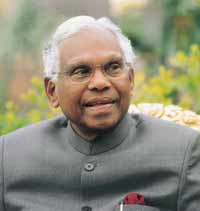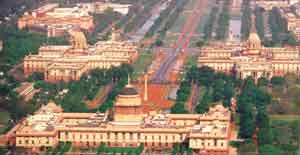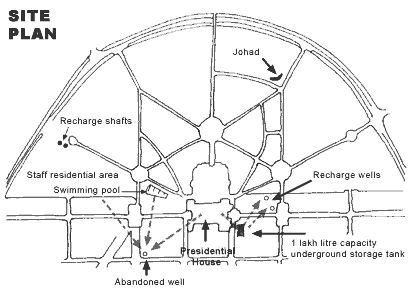Case Background
 In November 1998, the then-President of India, K R Narayanan invited
CSE to suggest measures to harvest water at the Rashtrapati Bhavan. An advisory committee
was set up by CSE, which developed a plan for water harvesting at the Rashtrapati Bhavan.
The implementation of the scheme is being undertaken by the Central Public Works
Department (CPWD) and Central Ground Water Board (CGWB). In November 1998, the then-President of India, K R Narayanan invited
CSE to suggest measures to harvest water at the Rashtrapati Bhavan. An advisory committee
was set up by CSE, which developed a plan for water harvesting at the Rashtrapati Bhavan.
The implementation of the scheme is being undertaken by the Central Public Works
Department (CPWD) and Central Ground Water Board (CGWB).
The Presidential Estate covers an area of 133 hectares (1.33 sq. km.).
The water requirements of the presidential estate are huge since there are about 7,000
people residing in the estate. Approximately 3,000 people visit the presidential premises
everyday.The Mughal Gardens in the estate require a lot of water. The total demand is
about 2 million litres of water per day (730 million litres per year). This demand is met  through
the New Delhi Municipal Corporation supply and the estate’s own borewells. through
the New Delhi Municipal Corporation supply and the estate’s own borewells.
Since about 35 per cent of the water requirements are being met through
groundwater sources, there had been an alarming decline of groundwater levels in the
estate. Levels have gone down by 2 to 7 m in the past decade, with one well running dry.
Measures taken for water harvesting
The rainwater endowment of the area is 811 millions litres annually.
Estimated cost of installing the system is Rs. 20 lakh (work on some components of the
system was still underway in May 2000). Following measure have been planned for the estate
(see figure 4.2.1 on p22):
a. Rainwater storage tank
 Rainwater from the northern side of roof
and paved areas surrounding Rashtrapati Bhavan is diverted to an underground storage tank
of 1 lakh litre capacity for low quality use. Rainwater from the northern side of roof
and paved areas surrounding Rashtrapati Bhavan is diverted to an underground storage tank
of 1 lakh litre capacity for low quality use.
b. Well recharging
Overflow from the 1 lakh litre capacity rainwater storage tank
mentioned above is diverted to two dugwells for recharging. Rainwater from the southern
side of the roof is diverted for recharging a dry open well. Rainfall runoff from the
staff residential area is also diverted to the dry well. Water passing into the recharge
well is passed through a desilting tank to remove pollutants. The 9 lakh litre capacity
swimming pool in the estate is planned to be connected to the dry dugwell, so that during
periodic emptying of the pool, water can be used for recharging instead of being drained
away.
c. Recharge shaft
15 m deep recharge shafts will be constructed in the staff residential
area. Rainwater available from rooftops, roads and parks will be used for recharging.
d. Johad
A johad is a crescent-shaped bund which is built across a sloping catchment to
capture the surface runoff. Water accumulating in the johad percolates in the soil
to augment the groundwater. Johads have traditionally been used in Rajasthan for
harvesting water. A johad is planned to be constructed near the Mughal Gardens. |





 In November 1998, the then-President of India, K R Narayanan invited
CSE to suggest measures to harvest water at the Rashtrapati Bhavan. An advisory committee
was set up by CSE, which developed a plan for water harvesting at the Rashtrapati Bhavan.
The implementation of the scheme is being undertaken by the Central Public Works
Department (CPWD) and Central Ground Water Board (CGWB).
In November 1998, the then-President of India, K R Narayanan invited
CSE to suggest measures to harvest water at the Rashtrapati Bhavan. An advisory committee
was set up by CSE, which developed a plan for water harvesting at the Rashtrapati Bhavan.
The implementation of the scheme is being undertaken by the Central Public Works
Department (CPWD) and Central Ground Water Board (CGWB). through
the New Delhi Municipal Corporation supply and the estate’s own borewells.
through
the New Delhi Municipal Corporation supply and the estate’s own borewells.  Rainwater from the northern side of roof
and paved areas surrounding Rashtrapati Bhavan is diverted to an underground storage tank
of 1 lakh litre capacity for low quality use.
Rainwater from the northern side of roof
and paved areas surrounding Rashtrapati Bhavan is diverted to an underground storage tank
of 1 lakh litre capacity for low quality use. 